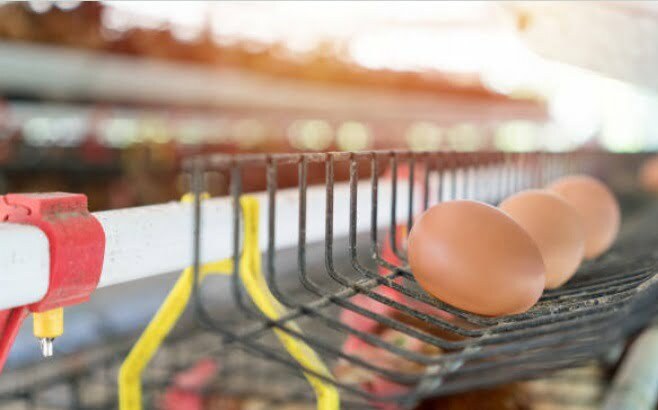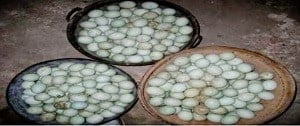Naturally, goats are browser type animals. In searching for food, goats are naturally selective in choosing food.
If the Javanese say the goats are not grazing like sheep.
But in my opinion it’s not like that. It seems like the pond or forage is only the preferred choice.
For example, if given a choice between grazing and browsing, goats would prefer to browse.
In fact, many goats left in the field want to graze. Because there is no forage there.
Therefore, the availability of forage feed is one of the biggest challenges in the supply of goat feed.
Especially if you keep it intensively or fully stained. We must provide fully for this feed requirement.
Full intensive goat maintenance is also not without challenges.
One of the challenges is if we want to store a lot of food.
Therefore, goat feed silage can be an economical source of animal feed.
Moreover, for farms with a large goat and sheep population.
With silage, more types of feed can be utilized. For example corn plants.
Silage from corn plants can be made from all parts of corn plants. Stems, leaves, husks and even beards can be made to feed goats or sheep.
In addition to these ingredients, silage can also be made from all forages and seeds. If the seeds seem too expensive if used as goat feed.
Unless the purpose is used as a concentrate.
Silage is not without risk
The biggest risk associated with silage feeding for goats and sheep is listeriosis.
Listeriosis is caused by the Listeriosis monocytogenes bacteria.
Listeria is naturally found in soils that are cold and humid. It can also be easily grown in fermented feed and wet hay.
To grow in goat feed silage, listeriosis bacteria need oxygen and pH above 5.5.
Listeriosis bacteria will grow where there is an oxygen leak in the bunker or silage storage plastic.
Typically, listeriosis appears in silo parts such as the surface of the silo, the angle of the silo and other possibilities of silo leakage.
The main source of listeria is moldy silage.
In goats and sheep, listeria causes miscarriages, infections, inflammation of the brain and birth to death.
The clinical symptoms occur about 3 weeks after goats and sheep eat silage that contains listeria bacteria. There is no cure for listeriosis.
For now high doses of antibiotics are used to try to overcome them.
Therefore, in giving silage you should pay attention to the following:
- Always test levels of nutrition and mycotoxins.
- Balanced in calculating the proportion of nutritional content.
- Silage should not be given to goats or sheep if there are fungi or mycotoxins.
When viewed from easy and not in providing it, silage feed for goats provides its own advantages.
Goat feed silage can be stored for months, so that feed stock for the next few months can be provided.
Thus, more time can be saved for other activities.
Giving silage to goats is generally safe. However, it still has potential risks.
Factors such as the quality of silage ingredients and management after silage are need to be considered.
Silage made from forage, generally favored by goats. For example silage from corn, grass, alfalfa and others.
Forage is made silage in fresh conditions which are chopped into smaller sizes.
I mean fresh is forage is still in a condition of high moisture content when made silage.
The goal is to prevent the forage from decaying. This is because forage with high water content is more easily decayed if it is simply stored.
But with silage, the storage can take longer.
The key to success in making silage is to keep the HMT in a vacuum. The goal is to prevent oxygen from entering.
If there is a leak, then the oxygen will enter and an oxidation reaction will occur and then the decay will occur.
For this reason, making silage can be carried out in a container such as a silo or plastic bag with a large enough diameter.
In the process of making silage, fermentation and acidification will occur. This process will produce lactic acid and acetic acid.
Bacteria found or added to feed will break down starch, sugar and oxygen. This process will stop the decay process.
When it reaches a certain degree of acidity, the ensilage process will stop. The feed is stable, the temperature is normal and sweet-smelling.
The problem is when the feed is opened and not once used up. Then the next storage will occur again the process of oxidation and decay until the oxygen that has already entered has been exhausted again.
In addition to the density of silage containers, another important factor in determining the success of making silage is forage content.
This is a complicated matter. Because easily, forage water content can be obtained from research data. However, field conditions are different. Especially during the rainy season.
Therefore, it is actually easier to do dry material fermentation because water can be added and the amount can be controlled.
Bacteria require certain water levels to be able to synthesize fermented acids.
Later in the silage feed there will be various acids produced from the fermentation process.
The types of acids that are good and useful in silage are lactic acid and acetic acid.
If propionic acid, butyric acid, ammonia and alcohol are by-products that are not good for silage itself.
In goat feed silage, the amount of lactic acid must be higher than other acids.
Lactic acid is odorless. So, it is impossible to know the exact number only with the five human senses.
To find out the amount must be with laboratory tests.
Lactic acid of 8-10% in silage shows that the fermentation process is going well and fast.
The amount of acetic acid should be about one third of the amount of lactic acid.
If there is more acetic acid, that means fermentation in silage is slow. Acetic acid smells like vinegar.
Fast and slow means that silage is fast to be stable because the longer it takes to achieve stability the greater the chance for the presence of unwanted bacteria.
Heat and fermentation are too long, after the bacteria have finished breaking down starch, bacteria will degrade the protein and the result is ammonia.
If there are sufficient amounts of butyric acid, then the HMT made for silage is too wet.
Butyric acid stinks, so silage will also smell bad. Do not give silage like this to goats.
An important problem in goat feed silage is the appearance of mycotoxins.
Mycotoxins are poisons produced by fungi and found in varying amounts in almost every silage.
These toxic enzymes can be in the form of aflatoxin, vumitoxin, zearalenone, T-2 and fumonysis.
Mycotoxins can attack the goat’s immune system, productivity of milk and reproduction of goats.
It is recommended that in making silage a mixture of mycotoxin binder ingredients is included. In the case of mycotoxins the binder will be discussed in the next post.
Get here first for this article. Hopefully helpful, and thank you.
 JOYNIM FARM Goat Farming, Cattle Farm, Laying Hens, Quail Farm, Gardening
JOYNIM FARM Goat Farming, Cattle Farm, Laying Hens, Quail Farm, Gardening



what’s the better way to store corn silage in smaller quantity like 1 sack of corn silage could last the farm for 3 weeks?
Are you not suspicious because of tetanus?
what makes kids 1_2 weeks to die with out shawing clinical signs.